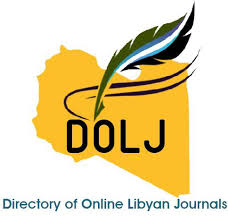Gunshot injuries of chest : analysis of 32 patients
DOI:
https://doi.org/10.54361/Keywords:
Penetrating thoracic trauma, tube thoracostomy, thoracotomyAbstract
Background: Penetrating injuries to the chest present a frequent and challenging problem. The majority of these injuries can be managed non-operatively. The selection of patients for operation or observation can be made by clinical examination and appropriate investigations. This study is conducted to present our experience in management of the chest gunshot during Libyan revolution and in a situation where the basic diagnostic tool (X-ray) was unavailable. Methods: we retrospectively reviewed 32 patients seen at our hospital over a 6-day period during revolution (16-21 Feb). The data evaluated and analysed. Results: The group comprised 32 male patients, with a mean age of 29 years (17-58). Of these patients,17 (53.2%) had left-sided, 15 (46.8%) had right-sided, 19(59.4%) had isolated chest injury and 13 (40.6%) patients had associated other injuries.. Thorcostomy tube was the only therapy required in 19 patients (59.4%), whereas 13 patients (40.6%) underwent thoracotomy and exploration. Mean hospitalization period for patients with thoracostomy tube was 6 days whereas median hospitalization duration in the exploration group was 9 days. Complications recorded in 2 cases. Conclusion: In this study we emphasize that in the situation where x-ray is not available , the clinical examination, pleural aspiration and the thoracostomy tube are the appropriate methods of managing penetrating chest injuries.
Downloads
References
Patterson A, Cooper D, Deslauriers J, Lerut AEMR, Luketich JD, Rice TW. Pearson’s thoracic and esophageal surgery, 3rd ed. Philadelphia: Churchill Livingstone; 2008. p.1777-9.
Tariq UM, Faruque A, Ansari H, Ahmad M, Rashid U, Perveen S et al. Changes in the patterns, presentation and management of penetrating chest trauma patients at a level II trauma centre in Southern Pakistan over the last two decades. Interact Cardiovasc Th orac Surg 2011; 12: 24-7.
Cury F, Baitello AL, Echeverria RF, Espada PC, Pereira de Godoy JM. Rates of thoracic trauma and mortality due to accidents in Brazil. Ann Th orac Med 2009; 4: 25-6.
Madiba TE, Thomson SR, Mdlalose N. Penetrating chest injuries in the firearm era. Injury. 2001;32:13–16
Murray JA, Berne J, Asensio JA. Penetrating thoracoabdominal trauma. Emerg Med Clin North Am. 1998;16:107–128.
American College of Surgeons Committee on Trauma. Advanced Trauma Life Support for Doctors, ATLS Student Course Manual. Chicago: American College of Surgeons; 2008.
Asensio JA, Arroyo H Jr, Veloz W. Penetrating thoracoabdominal injuries: ongoing dilemma-which cavity and when? World J Surg. 2002;26:539–543.
Bastos R, Baisden CE, Harker L, Calhoon JH. Penetrating thoracic trauma. Semin Thorac Cardiovasc Surg. 2008;20:19–25.
Meyer DM. Hemothorax related to trauma. Thorac Surg Clin. 2007;17:47–55.
Scharff JR, Naunheim KS. Traumatic diaphragmatic injuries. Thorac Surg Clin. 2007;17:81–85.
Lema MK, Chalya PL, Mabula JB, Mahalu W. Pattern and outcome of chest injuries at Bugando Medical Centre in Northwestern Tanzania. J Cardiothorac Surg 2011; 6: 7.
Segers P, Van Schil P, Jorens P, Van Den Brande F. Th oracic trauma: an analysis of 187 patients. Acta Chir Belg 2001; 101: 277-82.
Th omas MO, Ogunleye EO. Penetrating chest trauma in Nigeria. Asian Cardiovasc Th orac Ann 2005; 13: 103-6.
Petrone P, Asensio JA. Surgical management of penetrating pulmonary injuries. Scand J Trauma Resusc Emerg Med 2009; 17: 8.
Murray JA, Berne J, Asensio JA. Penetrating thoracoabdominal trauma. Emerg Med Clin North Am. 1998;16:107–128.
Powell BS, Magnotti LJ, Schroeppel TJ. Diagnostic laparoscopy for the evaluation of occult diaphragmatic injury following penetrating thoracoabdominal trauma. Injury. 2008;39:530–534.
Cothren C, Moore EE, Biffl WL, Franciose RJ, Off ner PJ, Burch JM. Lung- sparing techniques are associated with improved outcome compared with anatomic resection for severe lung injuries. J Trauma 2002; 53: 483-7.
Downloads
Published
Issue
Section
License
Copyright (c) 2017 Mustafa Noman Sabet, Abdelkarim Bashir, Ahmad Faraj Hamad (Author)

This work is licensed under a Creative Commons Attribution-NonCommercial-NoDerivatives 4.0 International License.
Open Access Policy
Libyan journal of medical Research (LJMR).is an open journal, therefore there are no fees required for downloading any publication from the journal website by authors, readers, and institution.
The journal applies the license of CC BY (a Creative Commons Attribution 4.0 International license). This license allows authors to keep ownership f the copyright of their papers. But this license permits any user to download , print out, extract, reuse, archive, and distribute the article, so long as appropriate credit is given to the authors and the source of the work.
The license ensures that the article will be available as widely as possible and that the article can be included in any scientific archive.
Editorial Policy
The publication of an article in a peer reviewed journal is an essential model for Libyan journal of medical Research (LJMR). It is necessary to agree upon standards of expected ethical behavior for all parties involved in the act of publishing: the author, the journal editorial, the peer reviewer and the publisher.
Any manuscript or substantial parts of it, submitted to the journal must not be under consideration by any other journal. In general, the manuscript should not have already been published in any journal or other citable form, although it may have been deposited on a preprint server. Authors are required to ensure that no material submitted as part of a manuscript infringes existing copyrights, or the rights of a third party.
Authorship Policy
The manuscript authorship should be limited to those who have made a significant contribution and intellectual input to the research submitted to the journal, including design, performance, interpretation of the reported study, and writing the manuscript. All those who have made significant contributions should be listed as co-authors.
Others who have participated in certain substantive aspects of the manuscript but without intellectual input should only be recognized in the acknowledgements section of the manuscript. Also, one of the authors should be selected as the corresponding author to communicate with the journal and approve the final version of the manuscript for publication in the LJMR.
Peer-review Policy
- All the manuscripts submitted to LJMR will be subjected to the double-blinded peer-review process;
- The manuscript will be reviewed by two suitable experts in the respective subject area.
- Reports of all the reviewers will be considered while deciding on acceptance/revision or rejection of a manuscript.
- Editor-In-Chief will make the final decision, based on the reviewer’s comments.
- Editor-In-Chief can ask one or more advisory board members for their suggestions upon a manuscript, before making the final decision.
- Associate editor and review editors provide administrative support to maintain the integrity of the peer-review process.
- In case, authors challenge the editor’s negative decision with suitable arguments, the manuscript can be sent to one more reviewer and the final decision will be made based upon his recommendations.













